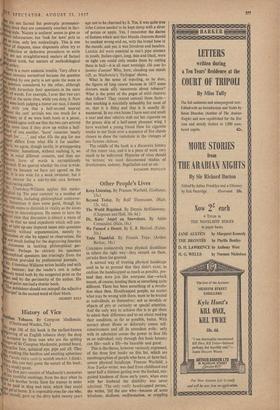Argument
WHY do controversies continue and disc ments remain unresolved? Surely the parli6 hl a dispute know what factual evidence alternatively, what rules of logic are corn ih to determine the truth or falsity of their cool ing assertions, since if they do not knovt' they do not know what they are assertiajko denying. But if they do know this, then 111); questions should either be decided by dA appeal to these facts or to these rules, 0-1 where the evidence is not available, the que9 should be put into cold storage until it bee available. Disputation, it seems, is either Lino sary or impotent.
Mr. Crawshay-Williams attempts to dill the inveteracy of certain kinds of disagree and to provide a battery of methods by they may be killed when still young. He off, as the Verificationists had failed to do,1 factual and from analytic assertions, a cla55 methodological assertions — assertions, that which prescribe what needs to be done if specified end is to be achieved. He concelll
. on the methodology of theorising. His own explicitly claims to be a contribution methodology of the methodology of thee!
The recipient and e'en the donor of dological counsels does not always realise 2 are not factual but protreptic pronounce- jr since they are commonly couched in fact- jog „ling style. 'Nature is uniform' seems to give us Aillic information; but 'look for laws' puts us t as wise, only less misleadingly. This is one t,,11,ree of disputes, since disputants often try to ,07 inductive or deductive procedures to settle eat are not straightforward matters of factual OrAll?gical truth, but matters of methodological 101,71 policy. here is a more endemic trouble. Very often a sail"Plue remains unresolved because the question Pons.
.tief Idered by one party is not quite the same as 0 question considered by the other, although I both formulate their questions in the same
on of words. For example, I aver that two cars yr lye(' at the same time, while you deny it. Now ial W'e were both judging a motor-car race, I should 111,,k ee with you that a half-second interval . e , dL tWeen the cars' arrivals was too much for a ti-heat; or if we were both hosts at a picnic, a would agree with me that the two cars arrived he same time if they drew up within a half- 0'°11(1 of one another. 'Same' connotes 'nearly :ugh for . . .', and what fills the gap for one ,fltext differs from what fills it for another. a liallY we agree, though tacitly, in presupposing context. Sometimes, without realising it, we 0 e in mind different contexts, and then our mon form of words is surreptitiously "'vocal. If we quarrel whether the river is wide, 11,1aY be because we have not agreed on the ie. It is too wide for a weak swimmer, but it 100 narrow for a side-by-side race between 'It, veral racing eights.
to ir. Crawshay-Williams applies this metho- ) qieal tip 'Fix your contexts' to a number of
01 toienstroversies, including philosophical controver- ie r, • Sometimes it does some good, though his 4111eiple seems to diminish in vitality as the issues crease in interestingness. He seems to have the r . neral view that discussion is always a waste of 0 e, so that we need expedients which will con- t or split up any disputed issues into questions .,iclable without argumentation, namely by , teulation or else by appeal to observation. He t8 not much feeling for the degrooving function Ldiscussion in tackling philosophical per- k,ittilies. Perhaps he extracts his specimen "osophical questions too trustingly from the inmican provided by professional journals. Is'ir. Crawshay-Williams writes lucidly and with ti" Ile humour; but the reader's zest is rather 'erelY taxed both by the congested print on the ges and by the pertinacity of the author. His tral point merited a shorter book. , f. he publishers should not misspell the adjective klricipal' in the second word of their blurb. i
GILBERT RYLE































 Previous page
Previous page